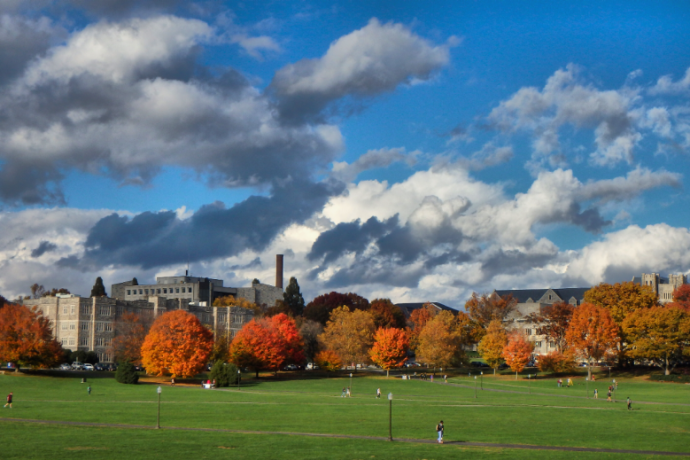- Build on pre-existing strengths and interests when creating a new program. Inventory what you have and work with that; there are probably more resources at your disposal than you realize.
- Don’t be afraid to stake out space at your institution.
- Reach out to colleagues in other departments to see if their work aligns with what you’re doing. Don’t reinvent any unnecessary wheels.
- Let your students’ ambitions guide you. Track where your students are ending up and see if there are ways for you to better support them in getting there.
- Look for ways to combine applied learning and practical skills with deep intellectual engagement. These two things need not be at odds.
Virginia Tech Humanities for Public Service Major

Not long after the Department of Religion and Culture at Virginia Tech (VT) launched its first major in Religion and Culture, the faculty began to notice a pattern among the department’s graduates: They had a distinct propensity for public service, including journalism, public interest law, education, and diplomacy. It was from that realization, and from VT’s motto Ut Prosim (“That I May Serve”), that the department’s second major, Humanities for Public Service, was born in 2019.
From the inception of the new major, the department aimed to build upon its strengths as an interdisciplinary department that had come together after a larger reshuffling. The Religion and Culture department at VT is not a traditional Religious Studies department; it is composed of faculty members from a number of different humanities programs, who had worked for several years to develop a coherent core curriculum for their first major. The faculty knew that they wanted the Humanities for Public Service major to include the same set of core courses as Religion and Culture and end with a field study or internship; the question was how to structure the middle of the program without creating dozens of new courses, which would be prohibitively laborious.
Faculty found that a number of applied humanities courses already existed in other departments, and their colleagues that taught them became willing collaborators. As a result, the major is fundamentally interdisciplinary, and many courses are cross-listed with other humanities disciplines, such as History, Women and Gender Studies, African American Studies, and Appalachian Studies. Major requirements include:
- 21 credits of required courses, which Humanities for Public Service shares with the major in Religion and Culture
- Six credits of more specialized “context/competency electives,” such as Religion and Science, Leadership for Global Sustainability, and Media and Politics
- Nine credits of applied courses, such as Public History, Public Administration, Global Ethics, Arts Management, and Appalachian Community Research
- The field study, which may be an internship, a service learning project, undergraduate research, or an approved study abroad program.
The first year the major was offered, the department received three times as many applicants from prospective first year students as it had previously. This was especially significant for a small, nontraditional, department at a large STEM-focused university dominated by engineering. Four years later, the Humanities for Public Service major accounts for 55% of the department’s majors.
While not explicitly vocational, the Humanities for Public Service major attends seriously to the concerns that many undergraduate students and their families have for their future careers. It emphasizes the importance of what Department Chair Matthew Gabriele calls “the intellectual architecture of the humanities” for both professional success and global citizenship, and it does not see tension between the intrinsic value of a humanities education and preparing students for a future career. The Humanities for Public Service major demonstrates the value of offering undergraduate students clearly articulated practical skills and applied experiences in combination with a liberal arts education that has both breadth and depth.

